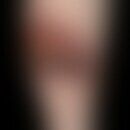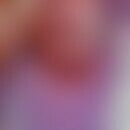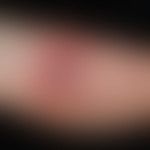Synonym(s)
DefinitionThis section has been translated automatically.
Acute, vesicular, superficial form of an acute paronychia. Bulla repens can also be described as a special form of (blistered) Impetigo contagiosa on the groin skin.
PathogenThis section has been translated automatically.
Staphylococcus aureus, rarely strep.
You might also be interested in
EtiopathogenesisThis section has been translated automatically.
The clinic of bulla repens, as pyoderma of the groin skin, is defined by the anatomical peculiarity of the groin skin. The purulent exudation of the dermis leads to a subepithelial pustule with a "thick" stratur corneum forming the cover. Since this does not burst in contrast to the thin field skin, the exudation can only migrate subepithelially. A large, bulging pus blister is formed. At the tip of the finger or toe there is a "circulating" blister which is in reality a pustule.
LocalizationThis section has been translated automatically.
ClinicThis section has been translated automatically.
Mostly solitary, mostly turgid blister surrounded by an inflammatory cavity with initially clear contents, later purulent clouding (pus blister). There is a tendency to grasp the nail (circulation). Possible involvement of the nail fold and bed with loosening or detachment of the nail.
Differential diagnosisThis section has been translated automatically.
Complication(s)(associated diseasesThis section has been translated automatically.
External therapyThis section has been translated automatically.
- Opening of the bladder, removal of the bladder cover, baths with aqueous quinolinol solution(e.g. Chinosol 1:1000), R042, diluted potassium permanganate solution (light pink), ointment therapy with iodine-polyvidone ointment (e.g. R204, Braunovidon).
- Apply sterile dressings with gauze grid (e.g. Hansaplast), if necessary use gauze grid with antibiotic additives (Fucidine gauze, Branolind). Removal of ointment residues with iodine-polyvidone solution (e.g. Braunoderm).
Internal therapyThis section has been translated automatically.
Incoming links (9)
Acute paronychia; Bulla roden; Finger blister, purulent; Panaritium; Povidone-iodine ointment 10%, hydrophilic, soft (nrf 11.17.); Quinolinol sulphate monohydrate solution 0,1 % (nrf 11.127.); Staphylodermia superficialis bullosa manuum; Streptodermia superficialis bullosa manuum; Tourniole;Outgoing links (7)
Acute paronychia; Contagious impetigo; Herpes simplex virus infections; Panaritium; Phlegmons; Povidone-iodine ointment 10%, hydrophilic, soft (nrf 11.17.); Streptococcus;Disclaimer
Please ask your physician for a reliable diagnosis. This website is only meant as a reference.








